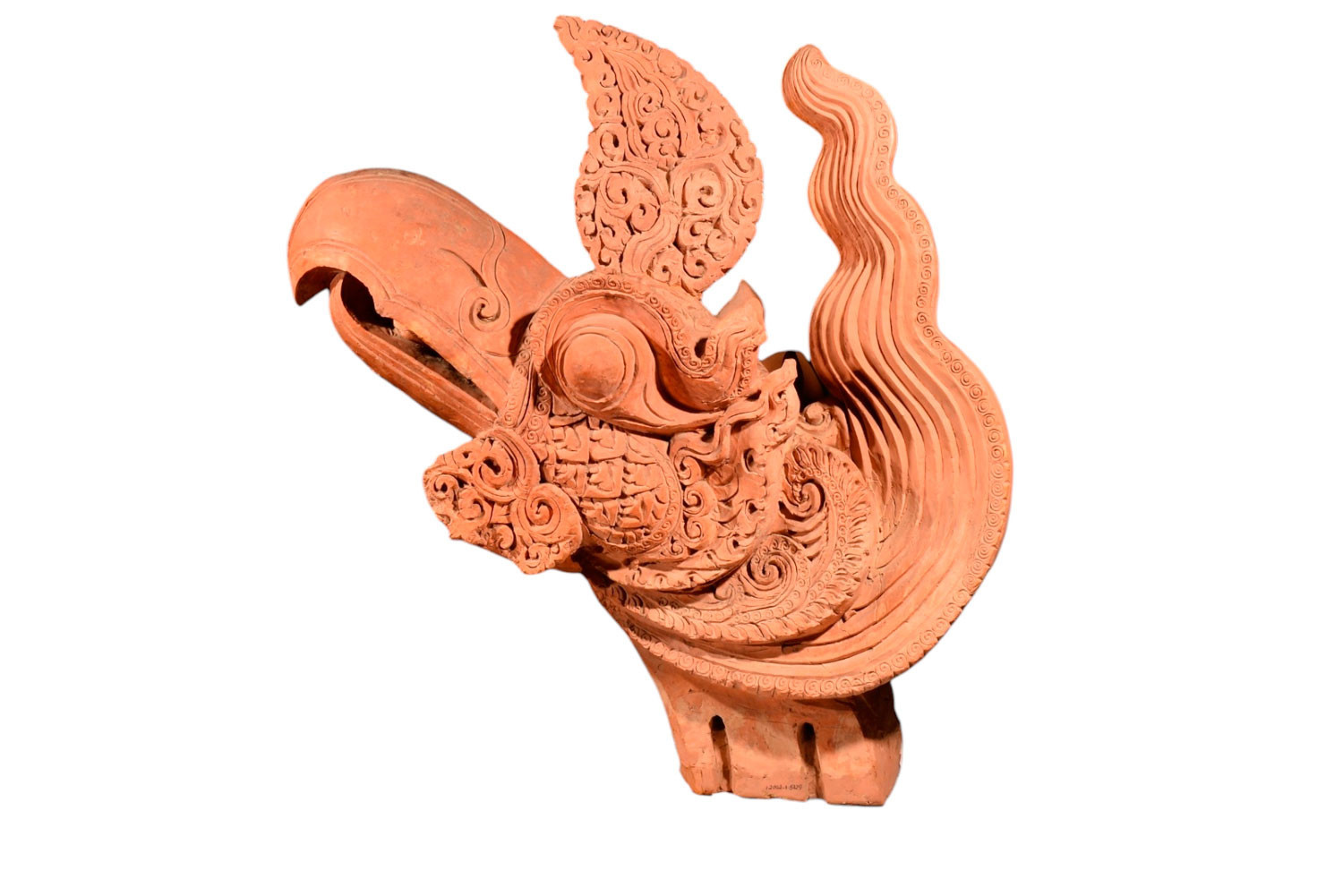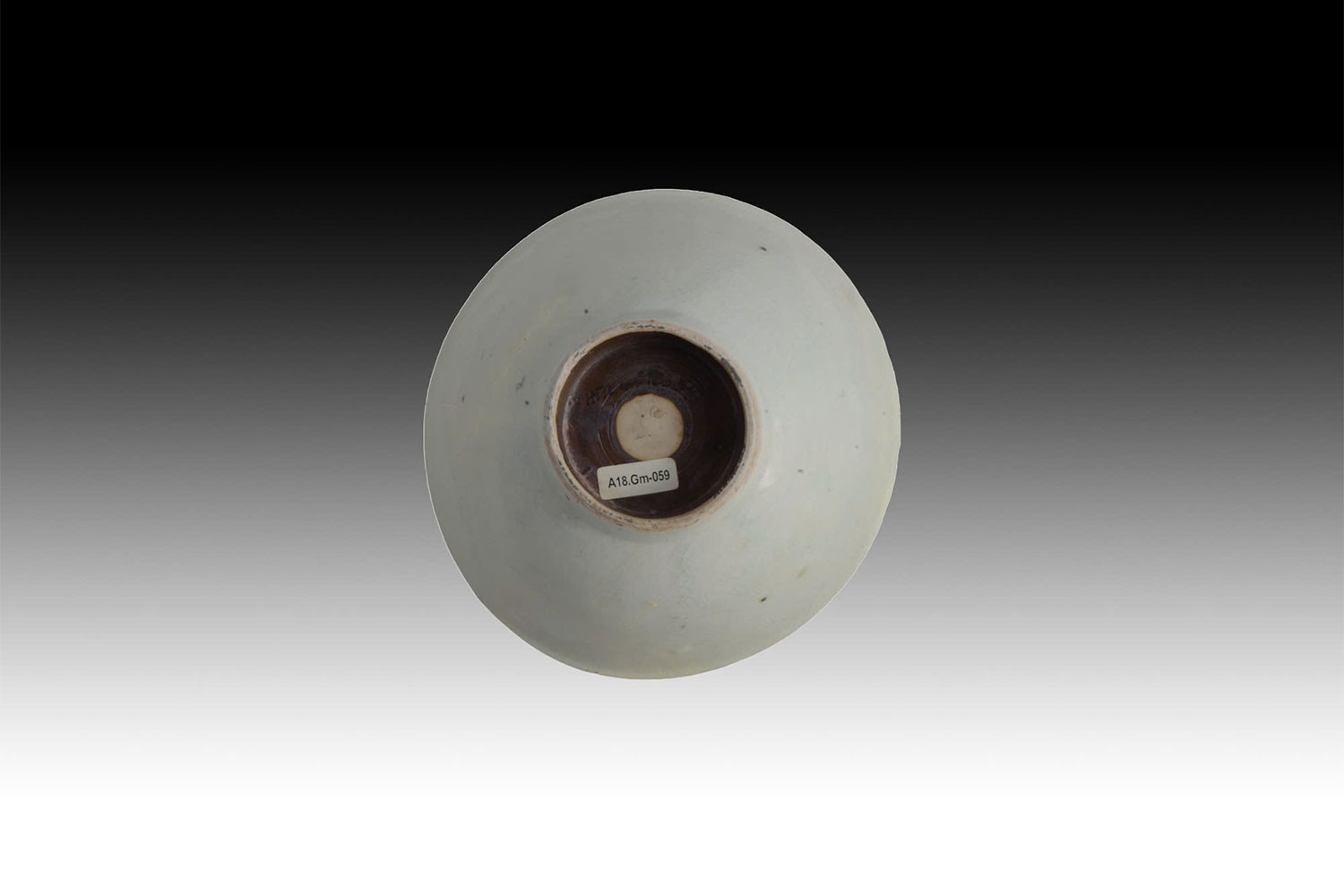Among the 33 national treasures recognized in the 13th decree by the Prime Minister, three are housed at the Thang Long Heritage Conservation Center in Hanoi.
These include the Collection of Phoenix Heads from Thang Long Imperial Citadel (Ly Dynasty, 11th–12th century), the Royal Utilitarian Vase (Early Le Dynasty, 15th century), and the Truong Lac Ceramic Collection (Early Le Dynasty, 15th–16th century).
Phoenix heads from the Ly Dynasty

The phoenix head collection, a symbol of Ly Dynasty architecture. Photo: Cultural Heritage Department
The Collection of Phoenix Heads is a set of unique and original artifacts discovered in the archaeological site at 18 Hoang Dieu Street within the Thang Long Imperial Citadel.
These artifacts, found in undisturbed strata, exemplify the architectural symbolism of the Ly Dynasty.
In Vietnamese royal culture, the phoenix and dragon are central symbols, with the phoenix often representing the empress and embodying harmonious happiness alongside the dragon.
The use of phoenix imagery in Ly and Tran Dynasty architecture reflects a confluence of Buddhism and Confucianism, as well as the balance of spiritual and secular authority in artistic expression.
These phoenix heads are also invaluable for researchers studying the roof structures of Ly-Tran era architecture. They serve as vital evidence of the artistic and architectural sophistication of 11th- and 12th-century Dai Viet.
The royal utilitarian vase of the Early Le Dynasty
 |
 |
 |
The Royal Utilitarian Vase, a masterpiece of ceramic craftsmanship, features a base, body, neck, spout, and handle, with the spout intricately designed as a dragon's head.
The dragon’s head is depicted in an upright posture with horns and flowing mane, showcasing dynamic energy and attention to detail.
The vase's handle resembles the body of a dragon, with scales and muscular limbs. Decorations include a flower motif on the shoulder, symbolizing aesthetic refinement.
Discovered in the archaeological site at 18 Hoang Dieu Street, this vase likely served as a ceremonial wine vessel during grand banquets of the Early Le Dynasty.
Its craftsmanship highlights the advanced ceramic production techniques of the 15th century and offers insights into the cultural and social life of the royal court during this era.
Truong Lac ceramic collection from the Early Le Dynasty
 |
 |

The Truong Lac Ceramic Collection consists of 36 pieces, including bowls, plates, and dishes of varying sizes, all crafted by hand.
The collection’s intricate floral patterns hold exceptional historical and cultural value.
Experts suggest these ceramics were used in the Truong Lac Palace, a significant structure within the Thang Long Imperial Citadel during the 15th and 16th centuries.
These artifacts provide critical data for understanding the functionality and evolution of royal palaces in the Early Le period, as well as the organization and operation of the imperial city of Thang Long.
Tinh Le